ENGLISH-CHN-1 UNIT-2-Community Health Nursing
Community Health Nursing
a) Philosophy, goals, objectives &
principles , concept and importance
of Community Health Nursing,
b) Qualities and functions of
Community Health Nurse
c) Steps of nursing process;
community identification,
population composition, health
and allied resources, community
assessment, planning & conducting
community nursing care services.
Community health nursing (community health nursing)
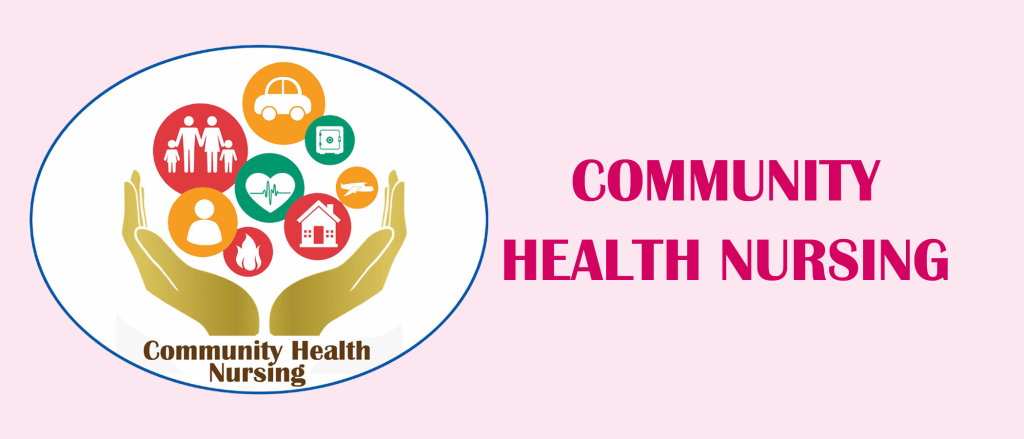
♦ Community

Define Community:

(1) A community can be described as a group of persons who socially interact because of shared goals and interests (McEwen & Nies, 2019).
A community can be described as a group of persons who socially interact because of shared goals and interests (McEwen & Nies, 2019).
(2) All the people who live in a particular place, area, etc. when considered as a group.
When all the people living in a particular place, area, etc. are considered as a group.
(3) A group of people with a common characteristic or interest living together within a larger society.
A group of people with a common characteristic or interest living together within a larger society

Thus, a community is a society in which a large group of people live in a specific geographical area and meet their basic needs. Such a group includes women, men, youth, children, etc. and they have different attitudes, beliefs and religions. Such a group is called a community.
HEALTH – Health (Health) :

In 1948, W.H.O (World Health Organization) gave the definition of Health, which is as follows.
” Health is a state of complete physical, mental, social and spiritual well-being and the absence of any disease or infirmity. “

As per WHO
“Health is a state or complete physical, mental, social and spiritual well being and not merely an absence of disease or infirmity.”
However, health is a constantly changing process, making it difficult to maintain this goal. Health is common in most cultures. In fact, every community has its own concept of health, health is a fundamental and basic right of every individual which is also included in the constitution.
♦ Community Health (Community Health) :

Community health is defined as the group of individuals living in a society who aims to maintain, protect and improve the health of the people. ” Community health (community health) is the aim of a group of individuals living in a society to maintain, protect and improve the health of the people. “
Community health provides preventive, promotional, curative and rehabilitation services
💚 Define community health (Define – Community Health ) :
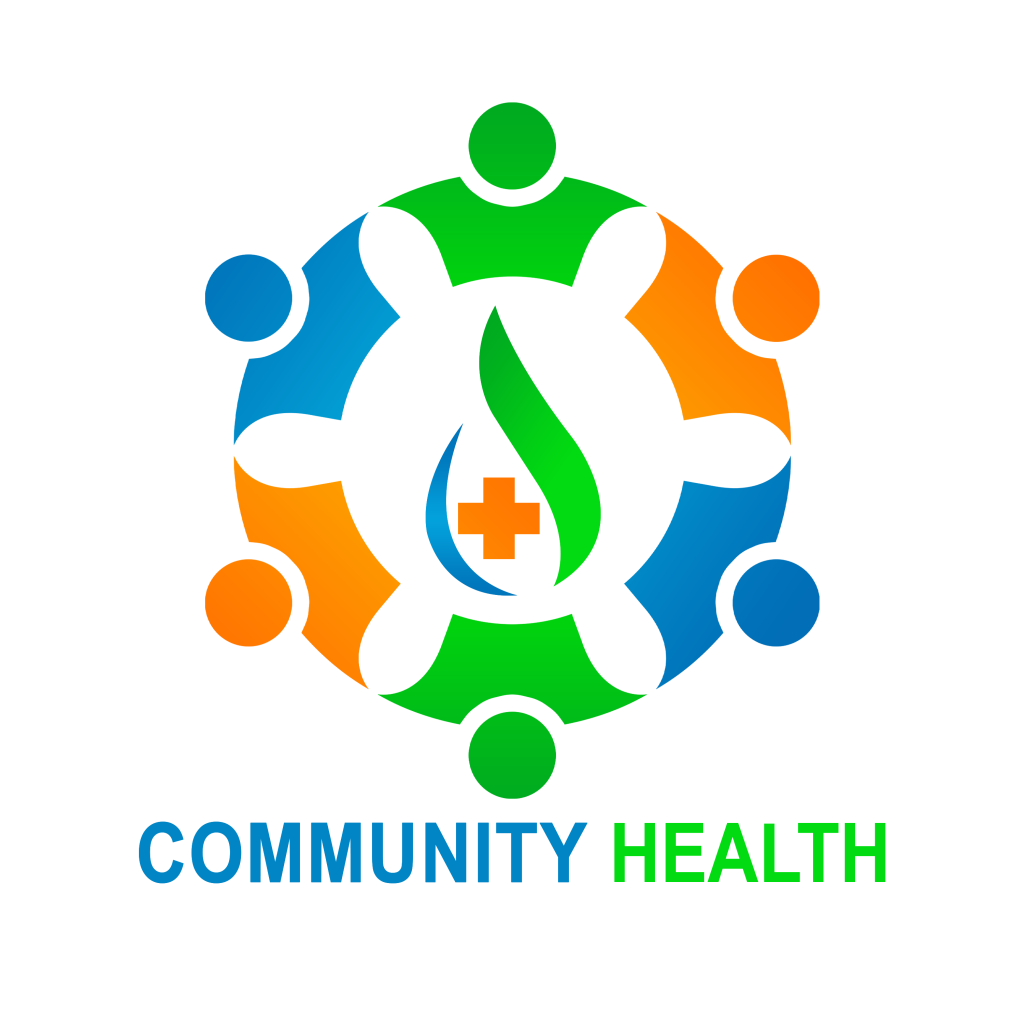
“Community health focuses on the health of the entire population and its communities, where there are populations with similar health concerns and characteristics.
COMMUNITY HEALTH NURSING:
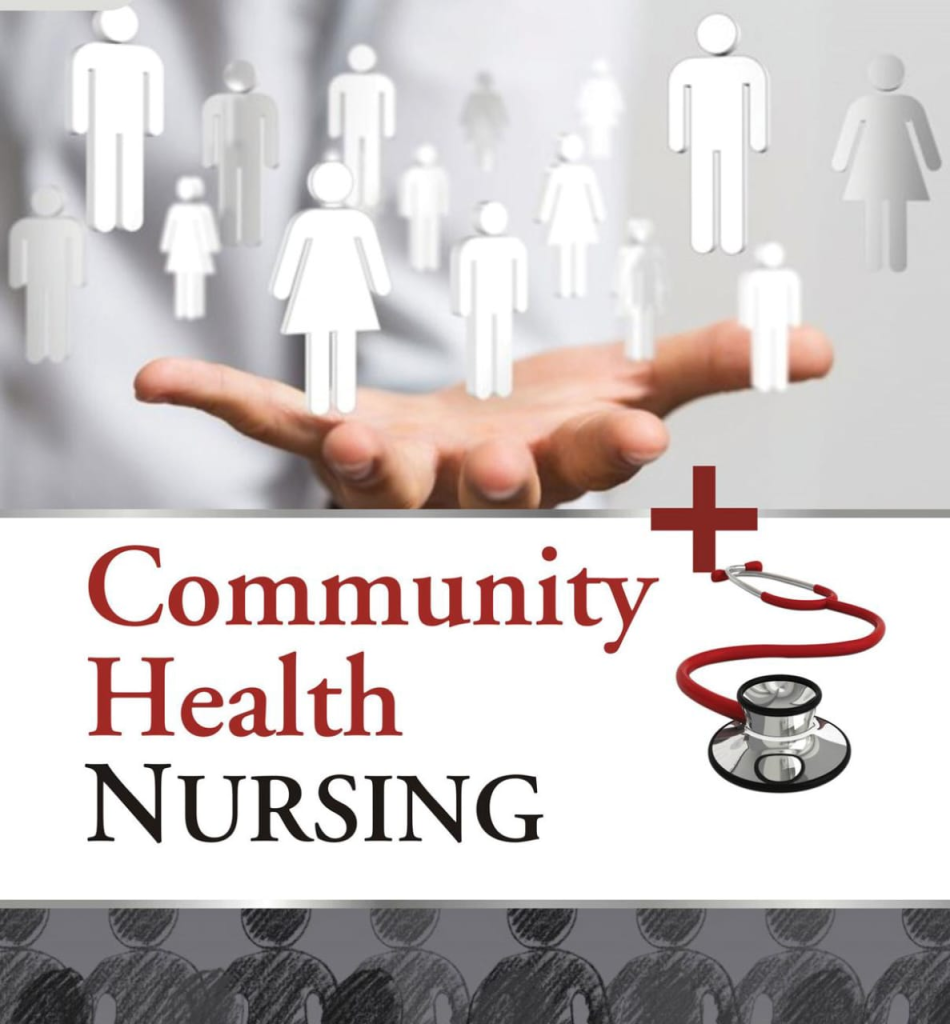
“Community health nursing is a synthesis of public health nursing practices applied to the promotion and preservation of the health of the population. Community health nursing means providing health services to the sick and healthy people in the community. Community health nursing is guided by the health status of the population in the community and the assessment made. “
or
“Community health nursing is a field of nursing that combines nursing practice with primary health care and public health nursing”
or
A specialized field of nursing that combines nursing skills, public health and social assistance and some phases of work as part of a total public health program to promote health, improve social and physical conditions, the environment, and the rehabilitation of illness and disability.
COMMUNITY HEALTH NURSING:

This is a broad area of nursing practice and has a very close relationship with human well-being. Its aim is to maintain community health using defined public health measures. In which there is no limitation to provide general and comprehensive treatment for a particular person or group of diseases, it has to be provided continuously and it is a continuous process.
In this, it is the responsibility of nurses to provide services to the entire community, so nursing has developed towards providing health services to everyone in the community, including individual families, specific groups such as children, industrial workers, in which nursing or family services can be provided at their homes, schools or workplaces. In this way, one has to understand one’s responsibility and work. For example, To strengthen the polio immunization program, political support should be sought and health education should be provided on a large scale and polio vaccination should be done to children.
Services provided by the nursing profession in the community are called Community Health Nursing.In 1956, I.N.C. By enrolling in this Subject ‘Nursing’, general nursing students are trained and informed about nursing services, nursing services are planned keeping in mind the aim of ensuring that the necessary health services are available to the people in the community in sufficient quantities.
Community health has been divided into four phases.
A. prevention of premature death (Prevention of premature death)
B. Prevention of disease, illness and disability (Prevention of disease, illness and disability)
C. Promotion and maintenance of health (Promotion and maintenance of health)
D. Rehabilitation (Rehabilitation)
General nursing students are trained and informed about nursing services by entering nursing, people in the community are
Philosophy, goal, objectives and principles :



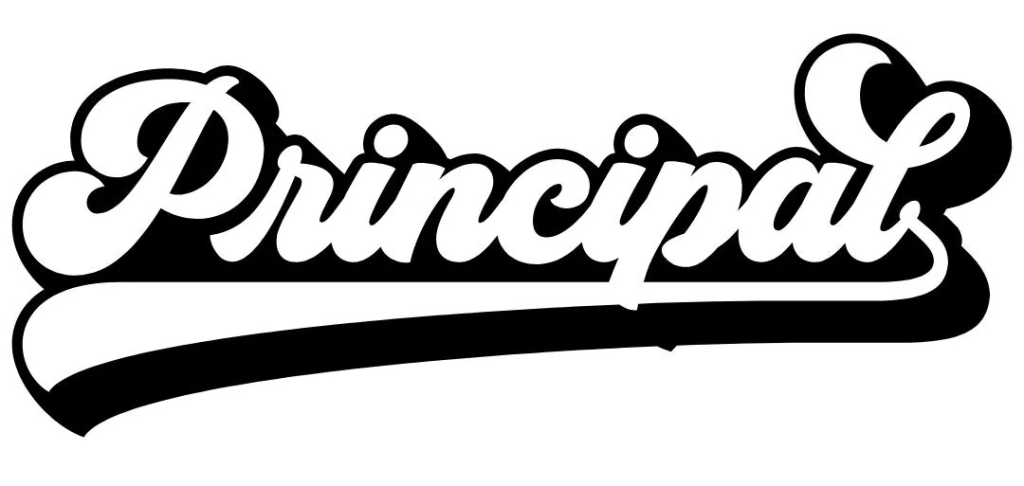
Explain the philosophy of community health nursing (Philosophy of Community Health Nursing) :

Philosophy generally refers to three components:
1.Knowledge:
Community health nursing is based on logical thinking and scientific methods.
2.Code of ethics value:
Community health nursing is based on the Code of Ethics Value is.
3.Existence:
Community health nursing is committed to its own beliefs about professional practice.
BASIC CONCEPTS:

1. Community Health Nursing believes that health is a fundamental human right and an integral part of growth and development.
2. It supports the entire community. This nursing encompasses all aspects of mental, physical, and spiritual health.
3. Recognizes the need for a holistic care approach.
4. health promotion and primary prevention are key activities in the community.
5. Promotes community-based efforts and community participation.
6. Promotes health in an acceptable manner. Supports encouraging behavior.
7. Conducts multidisciplinary team activities.
8. Works for the overall development and well-being of the individual, family, community, and nation.
9. Maintains sensitivity to the cultural beliefs and practices of the community.
10. Ensures equal access to health services for all, regardless of social and economic status. is.
Goals of community health nursing:

The overall goals of community health nursing are to help individuals, families, and communities achieve the highest possible health status.
1.Promotion of health (Promotion of health)- Promoting the health and well-being of community members.
Example: Health education on nutrition and hygiene (Health education on nutrition and hygiene).
2.Health maintenance (Health maintenance)- Maintaining a healthy environment Taking effective steps to improve the health of people by keeping them healthy.
Example: Sanitation drives (Swachhta Abhiyan).
3.Prevention of illness (Prevention of illness)- Taking steps to prevent the spread of an epidemic or disease.
Example: Vaccination campaigns (vaccination campaigns).
4. Restoration of health – Providing treatment and rehabilitation services to sick people. Example: Providing home care for recovering patients. 5. Treatment of minor ailments – Ensuring that health services are available and affordable to everyone. Example: Mobile health clinics. class=”has-inline-color”>6.Rehabilitation of the clients (Rehabilitation of the clients)- To reduce physical or mental disabilities and help them live healthy lives in the community.
Example: Occupational therapy programs (Occupational therapy programs).
Objectives of community health nursing (Objectives of community health nursing):

- To increase life expectancy-Improve the health level of the individual, family and community.
- To reduce IMR, MMR and other diseases-Provide community services for mothers and infants.
- To provide information about family planning.
- To prevent disability, provide rehabilitation services-Help the patient recover and return to a normal lifestyle.
- Providing assistance to people suffering from disabilities and chronic diseases.
- Providing health care services -ensuring people’s access to primary health centers, community health centers and medical services.
- Taking policy measures to address gaps in community services.
- To find the reasons affecting the relationship
- Health To evaluate the program and future plans.
- To conduct a community diagnosis
- To assist NGOs and other organizations Community Health Sector
- To assess the needs and priorities of vulnerable groups of pregnant mothers and children,
- To provide referral services
- To raise the standard of nursing profession
- To provide overall well-being of the community and maintain their optimal level of functioning
Principles community health nursing (principles of community health nursing):

- Community health nursing is community-focused, which means mapping out where nursing care is to be provided in the community and establishing good working practices.
- Delivering care that is needs of the community and the individual. Health programs and resources should solve health problems.
- Working with doctors, female health workers, female health supervisors, multipurpose workers and other health workers in the community health team, nurses help in planning, evaluating health programs, visiting people’s homes and giving advice, sanitation problems, nutritional problems, maintaining maternal and child health and providing health education.
- Health workers are authorized, health authorities are responsible for every health worker. Every health worker is appointed by the state, municipality, local or private body or agency. The nurse should be in contact with the public health authority in the area in which he works.
- He should plan and organize his work. All this is necessary to maintain unity and cooperation in the health program. Because the health authority is considered personally responsible.
- Health services should be available to people according to their age, race, religion, nationality, social, political or economic status. Everyone should have an environment where good personal health and environment are available.
- Health workers should not have political and partisan attitudes. Public health workers should not interfere in the national, religious beliefs of people but should be able to explain all other beliefs and social customs.
- Public health workers should never accept any gift or bribe. But if the government has fixed certain charges for some health care, then they should be taken honestly
- For working in public health work, family and community are considered a unit. Teaching is an important part of every health service.
- Evaluation of nursing services provided in the community from time to time is very important for planning and progress of services.
- Community health nursing should maintain a professional relationship and discipline with the community.
- There should be a system for guidance and supervision for public health nurses.
- Continuous provided health services is considered effective.
- Health services should be personalized and convenient.
- Other members who work with the Village People. They can also help in health programs.
- For fully satisfactory performance, a schedule should be available.
- The person’s interest in the profession should be developed and maintained.
Importance of community health nursing:
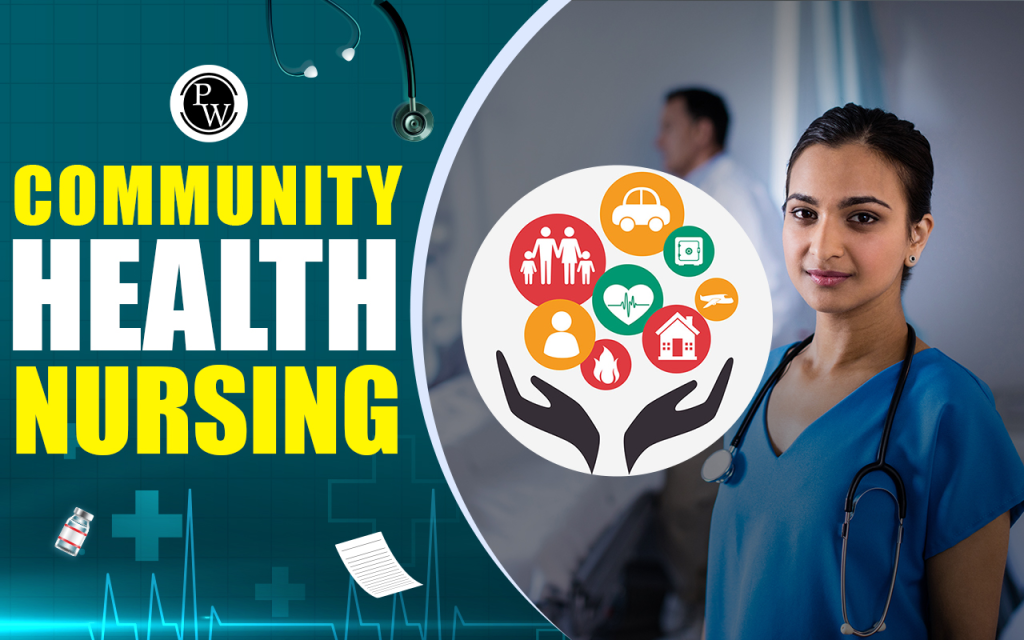
Importance of Community Health Nursing:
Community Health Nursing plays a vital role in the health system, focusing on improving and maintaining the health of individuals, families, and communities. These nursing services emphasize health education, preventive care, and access to health services, especially for Underserved Populations.
1. Focus on Preventive Care:
- Prevention Over Cure: Community health nursing focuses on preventive measures, such as vaccinations, health screenings, and early detection of diseases, which reduce the need for costly treatment.
- Health Education: Nursing spreads awareness about healthy lifestyles, disease prevention, and self-care in the community.
2. Improved Accessibility to Healthcare:
- Reaching Remote Areas: Community health nursing provides health services in rural and remote areas.
- Bridging Gaps: Nurses provide a link between healthcare professionals and the community, delivering needed health services.
3. Comprehensive and Holistic Care:
- Physical, Mental, and Social Health: Community health nursing assesses all aspects of health.
- Family-Centered Care: Focuses on maternal and infant health and positive change with the patient’s family.
4. Management of Communicable and Non-Communicable Diseases:
- Disease Control: Community health nurses prevent diseases through vaccination campaigns, health education and hygiene promotion.
- Chronic Disease Support: Provides patient care guidance for diseases such as diabetes and hypertension.
5. Emergency and Disaster Preparedness:
- Disaster Response: Nurses provide the best response to natural disasters and epidemics.
- Preparedness Training: Trains communities in Resilience-Building.
6. Empowering Communities:
- Advocacy: Nurses work to improve health policies for underserved populations.
- Health Literacy: Disseminates health-related knowledge to patients and their families so that they can take charge of their own health.
7. Cost-Effective Healthcare:
- Reducing Healthcare Costs: Preventive care and early treatment reduce healthcare costs.
- Decreasing Hospital Admissions: Community-based care reduces the likelihood of hospitalization.
8. Supporting Vulnerable Populations:
- Targeted Care: Provides special assistance to the elderly, low-income people, and underserved areas.
- Equity in Healthcare: Provides equal access to health services for all.
9. Promoting Environmental and Public Health:
- Environmental Health: Works for water purity, sanitation and hygiene.
- Public Health Initiatives: Drives public awareness for immunization, nutrition and hygiene.
10. Enhancing Quality of Life:
- Community Resilience: Achieves long-term health benefits by strengthening health infrastructure.
- Improved Outcomes: Work to improve healthy lifestyles and lifespans for patients and communities.
Community Health Nursing is a key pillar of the health system, providing health awareness, preventive services, and equal health opportunities. Encourages, especially for populations that do not have adequate facilities.
Explain to the student that it is necessary to first meet the community.
Establish contact with community leaders,
Get consent from local leaders for a baseline survey of the current health status of the organization.
A variety of approaches can be used to identify community health problems and health needs, including –
- Base line survey
- Verify the records of PHC and sub-centers.
- Conduct specific questionnaires related to common diseases in the community.
- Conduct questionnaires related to births, deaths, disabilities, work incapacity, etc.
Set priorities among health problems:
Four criteria are used to determine priorities among health
Problems:-
A. How often does the problem occur? (Prevalence)
B. How serious is the problem for individuals and society?
c. The urgency of the problems.
D. The extent to which the potential or sensitivity to control the problems is limited by financial resources.
E. A scoring system is used to rank priorities and how this can be done is shown in the table.
TABLE :
Criteria for fixing priorities:
1.Health problems: Dental Problems
- Prevalance: +++
- Serious-ness:+
- Urgency:++
- Feasibility:++
- Total score: 8
2.Health problems: Leprosy
- Prevalence:+
- Serious-ness:++
- Urgency:+++
- Feasibility:+
- Total score: 7
3.Health problems: diarrheal disease
- Prevalence:++
- Seriousness:++++
- Urgency:++++
- Feasibility:++++
- Total score:14
Plan regarding min health problem solution:
- Having identified whether a problem or need exists, the community health nurse must determine what actions should be taken by the health team and whether the health team will be able to take the appropriate action.
- Planning involves questions such as setting objectives and defining how to solve the problem.
Intervention & implementation activities:
- They carry out activities that are determined to be most effective in meeting the identified need in CHN.
- This phase includes all the tasks, processes, and practices performed by nurses.
Evaluate the health problem solution (Evaluate the health problem Solution):
- Evaluation will measure the extent to which a problem has been solved or a need met.
- Evaluation provides “feedback” that can lead to changes in the program, which will make the program more effective.
Qualities and functions of community health nurse:

Explain the educational qualifications of CHN (Educational Qualification of Community Health Nurse):
- Nursing should be registered in Diploma in general nursing and midwifery, and state nursing counseling.
- General nursing and diploma in public health should be completed in 9 months.
- University course in nursing (Bsc.nursing/post basic Bsc.nursing) should be completed.
Explain communication skills of CHN (एक्सप्लाइन Communication Skills of Community Health Nurse :
A CHN should be an expert in the following.
- a good teacher
- a good teacher
- a good teacher
- a good teacher
Observation skills of CHΝ (Explain Observation Skills of Community Health Nurse):
- Must have the ability to observe physical, mental and emotional conditions.
- Must have the ability to recognize signs and symptoms of disease
- Must be able to assess the health status of individuals, families and communities.
Explain ability to lead and take decision of CHN:
- Must be able to make right and immediate decisions according to the situation.
- Must be able to make independent decisions
- Must be able to lead a health team.
To explain other qualities of CHN (Explain other qualities of community health nurse):
- Must have knowledge of available resources and health problems of the community.
- Must have understanding of human behaviour
- Must have managerial abilities
- Must be physically and mentally fit.
To explain managerial functions of CHN (Explain managerial functions of community health nurse):
The managerial functions of CHN include the following responsibilities:-
The managerial functions of CHN include the following responsibilities:-
1.Assessment :

To collect information related to the community.
➤Finding health problems.
➤ Finding the limits and availability of resources.
➤ Deciding the nature and role of nursing services
➤ Epidemiological survey
2. Planning:

- Prepare plans to provide comprehensive nursing care to the individual, family and community, distribute work and provide cooperative nursing care between the health team is.
- Program plans for planning services for work areas (e.g. school, home, clinic) should be revised.
3. Supervision :

- Supervise the work of subordinates like male/female health workers, TBAS etc.
- Monitoring the work of other health workers e.g. health inspectors etc..
- Monitoring the care provided by family members.
4. CO-ordination & cooperation (coordination and cooperation):

- CO-ordination between health team members & Establishing cooperation.
- Gets the cooperation of influential people in the community in health work.
- Government & Maintaining contact with non Government, organization and other authorities.
- Participating in meeting.
- Acting as a liaison between health officer and health workers.
5. EVALUATION:

- monthly self assessment of the work (Monthly self assessment of the work)
- Send work na report to higher officers / health authorities /agencies.
- clinical services, immunization, motivating eligible couples & progress of family welfare program is to evaluate the work based on its progress.
Explain nursing functions of CHN (Explain nursing functions of community health nurses) :

- To provide comprehensive nursing services to individuals, families and community.
- assisting in the diagnosis & treatment of disease (Assisting in the Diagnosis and Treatment of Diseases)
- Guiding the family in taking care of the patient (Guiding the Family in Taking Care of the Patient)
- Regular home visit (Regular Home Visit)
Explain other educational function of CHN (Explain other educational function of Community Health Nurse ) :

- individuals & To educate the group.
- Participate in school health education program.
- Assisting in training programmers of nursing & health workers.
- Giving practical training about patient care.
- improvement & Giving education about development of environment.
- Preparation & intelligent use of audio visual materials.
- For research purposes, surveys, demographic fact collection & To assist in presentation etc…
To explain other work of CHN (Explain other function of Community Health Nurse) :

- Make appropriate use of referral services.
- Assist in the establishment of clinical and operation of health centers.
- Assist in the duties of health workers.
- Maintain health records & timely dispatch of reports.
- Assisting in health statistics work.
Community identification:

Define community identification:

Community identification is a systematic process of identifying and investigating the health condition of a community to determine possible factors affecting its health.
Explore the identified community:
It is more than making a medical or nursing diagnosis relevant to the community. It means learning about the area where people in the community live, other families in the area, especially community leaders, their lifestyles, and their resources. All this information can be obtained through:-
- Conducting formal and informal meetings with community people, leaders and organized groups which may include Panchayat members, school teachers, women’s groups, youth clubs/groups, youth researchers etc.
- Visit the community to observe the physical environment, biological environment and psychosocial environment.
- Informal conversation with people
- Going through records (Going through records) ).
- Formal community/sample surveys (through formal community or sample surveys).
- Talking to health and allied health personnel working in the community.
Various dimensions (outcomes) are seen about the community, the three basic dimensions of which are as follows

1.Place or space
2.People or person (People or Person)
3.Function
1.Place or space:

This includes the following components.
- Geographical area:
Size, census, blocks, climate, name of area, location, etc. - Geographical boundaries:
In our country, geographical and administrative boundaries have a significant impact on the administration of a community, so it is necessary to mention the electoral situation and local administration of the community. is. - Means of transport, foot, bullock cart, bus, boat, train, air etc.
- Physical environment: land use pattern, housing conditions etc.
2.People or person (People or Person):
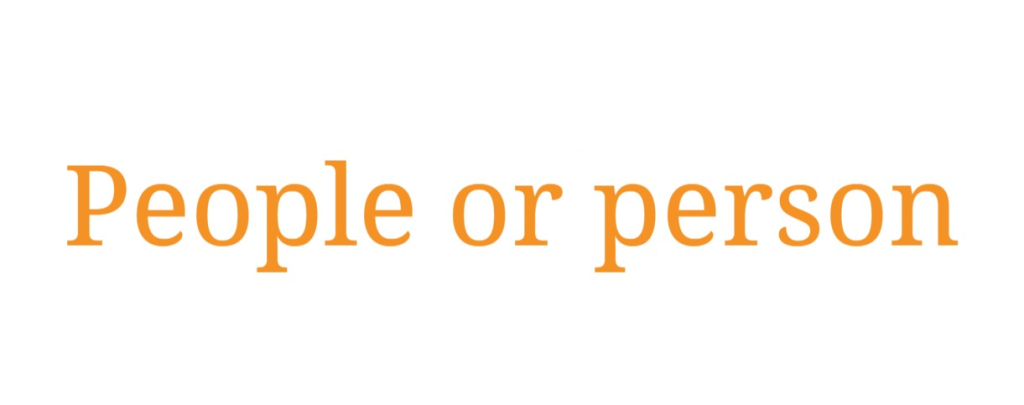
- It includes the demography and characteristics of the community.
- It is a fact that without people, a community has no meaning.
- Therefore, the demographic setup should be properly identified to identify the community.
- The handling of population composition is described more.
3.Function (Function):

It includes the main functionaries of the community, which may differ in urban and rural communities in our country.
It also implies the following….
- Maintenance of social control
- Employment/unemployment/ partial / seasonal employment status of the community.
- Socialization of new members
- Socialization of new members
- Production, distribution system consumption of goods and services
- Adaptation of ongoing and expected changes
- Provisions of mutual aid, cooperation
- Description of functions related to caste or religion etc. (Description of functions related to caste or religion etc.).
Explain community health nursing, process and community assessment (Define Community Health Nursing, Process and Community Assessment ) :

Introduction:

- Community health nursing is a synthesis of nursing and public health practice that is applied to promote and protect the health of a population.
- The community health nursing process is a process that determines the health status of a client. It is a systematic way to develop a plan to identify health problems, initiate the process of implementing the plan, and evaluate the plan’s suitability in solving the problem. Which is as follows…
- Which has 5 phases…
1.Community assessment (Community Assessment)
2.Community nursing diagnosis (Community Nursing Diagnosis)
3.Planning
4.Implementation
5.Evaluation
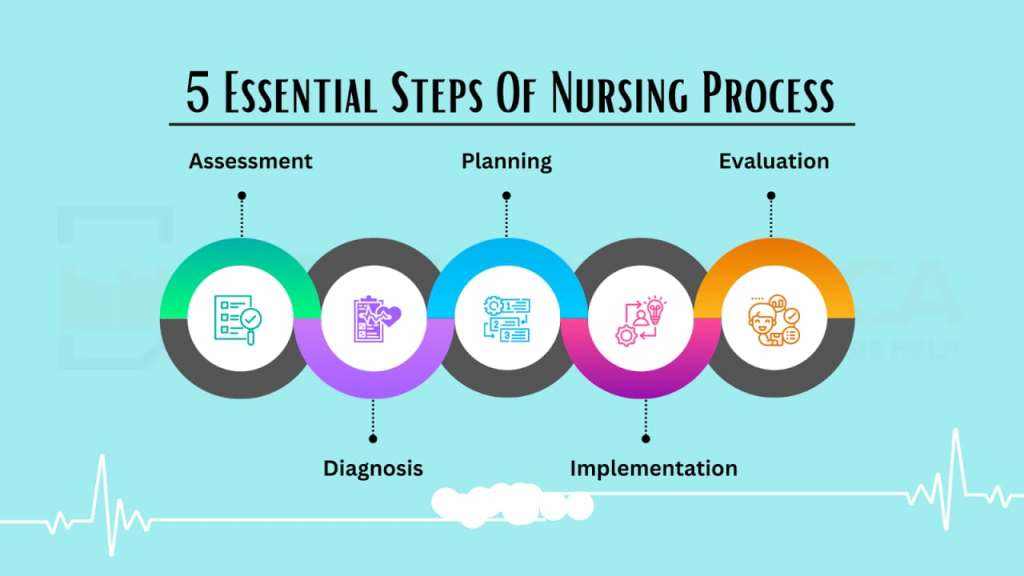
1.Community assessment:

Definition ( Definition ) :
Community assessment is a process that assesses the health status of local people, identification of main risk factors and causes of health Describes.
Or
Community assessment is a process that systematically collects data using quantitative and qualitative methods to understand the health of a specific community and analyzes that data.
Describe benefits of community assessment:
Benefits of community assessment:
Benefits of community assessment:
-
- Increase our understanding of the needs of people in the community.
-
- Get opportunities to share needs.
-
- Increased Community engagement
-
- Identify the strengths and weaknesses of the community.
-
- Raise awareness among community members.
-
- Data Use to inform strategic planning and priority setting.
Tools of community assessment

-
- Survey
-
- Asset inventory
-
- Community mapping
-
- Daily activity schedule
-
- Seasonal calendar
-
- Panel discussion etc…
Explain steps of community assessment :
Steps of community assessment :
- Define the scope
- Collect data
- Determine major findings
- Set priorities
- Create action plan
Components of community assessment ( Component of community assessment) :
- People (People)
- Health and social services (Health and social services)
- Economics (Economic)
- Communication
- Physical environment
- Safety and transport
- Politics and government
- Recreation
- Education
To describe the method of data collection:
To discuss community health nursing assessment.
Data collection and interpretation:
Data collection is necessary to obtain useful information about the community and its health data collection includes data of the community and data generation in its health data collection The details that can be collected from the information include:-
A. Geographical information
B. Demographic information
C. Environmental information
A. Geographical information:

- Getting preparing a map of the area, locating important institutions of public importance Demographical information:

- Name of the locality or area (लोकालिती तथा एरिया नु Name),
- Physical structure, boundaries,
- Important roads, streets, buildings,
- Important landmarks,
- Seasonal variation and months.
- Getting preparing a map of the area, locating important institutions of public importance.

- Specific vulnerable groups: infants, toddlers, expecting and lactating mothers and disease risk group
C. Environmental information:

- Physical environment: Housing, water supply, sanitation (Physical environment: Housing, water supply, sanitation).
- Social environment: social organization, school’s, temples etc (Social environment: Social organization, schools, temples etc). community organization (voluntary welfare organizations), leadership structure (Community organization: Voluntary welfare organization, leadership structure).
- Environmental communication:- Official and non-official channel, common meeting place, important communications events of communication (fairs, festivals)
- Media of communication:-radio, TV, cinema, newspapers etc
- Environmental resources:- economic resources (occupation, family income), institutional resources, human resources (doctors, engineers, teacher), natural resources (land, water soil) etc).(Environmental Resources: Economic Resources (Occupation, Family, Income), Institutional Resources, Human Resources (Doctors, Engineers, Teachers)Natural Resources (Land, Water, Soil) etc…)
2.Community nursing diagnosis:
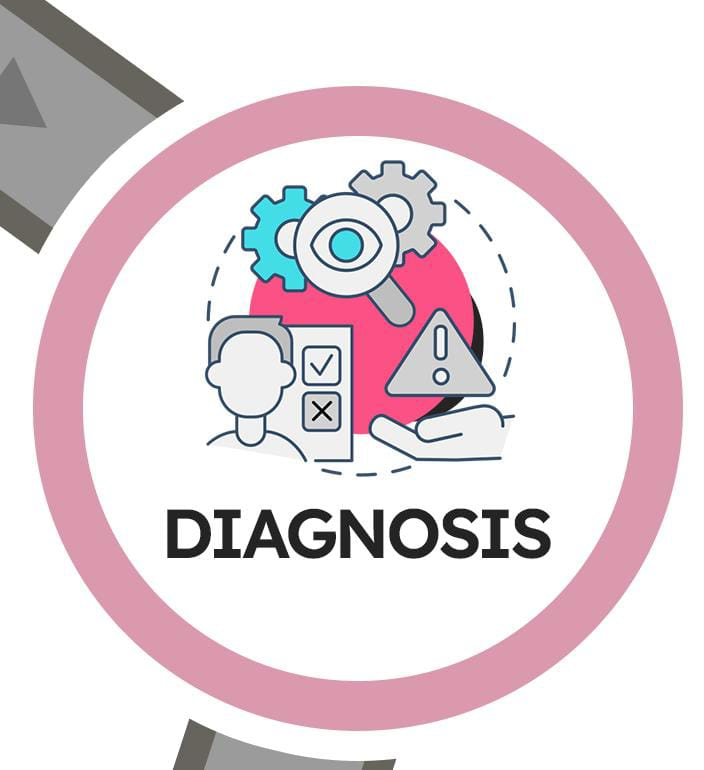
- Community Nursing diagnosis is the second step of the nursing process. In which the actual or potential problem of the community is identified through assessment and a nursing diagnosis is made. Then, care is provided keeping it in mind.
- Nursing diagnosis is the second step of the nursing process. In which the nurse interprets the collected data using critical thinking and identifies the problem.
- Diagnosis is the clinical act of identifying a problem.
- Nursing diagnosis is a clinical judgment of the actual and potential health response of the individual, family, and community.
- Nursing diagnosis is the reasoning process or clinical act of identifying a problem.
- Nursing diagnosis provides a link between assessment and planning.
- A list of nursing diagnoses has been provided by the North American Nursing Diagnosis Association (NANDA) and these NANDA nursing diagnoses are used throughout.
Write purpose of nursing diagnosis
- Identify the client’s health status and actual and potential problems.
- Identify nursing priorities.
- Analyze the collected data.
- Provide direction for planned nursing interventions.
- Identify the client’s normal level of function.
Write down statement of nursing diagnosis
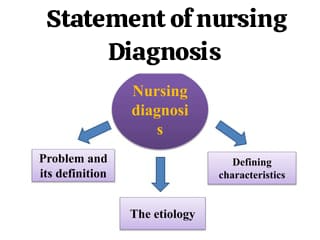
Problem/ Diagnostic label
In a nursing diagnosis, the patient’s actual or potential problem or diagnostic label is first written. This problem is written in a few words. This nursing diagnosis is taken from the list given by NANDA (North American Nursing Diagnosis Association). For example: Knowledge deficit, Anxiety, Ineffective airway clearance, Fluid volume deficit
Etiology
Etiology is the second statement of a nursing diagnosis. In which one or more causes of the problem are identified and written. Etiology gives direction to treat the problem. A problem may be seen in two patients but the etiology of both patients is not necessarily the same. This problem as well as the etiology is written with ‘related to’. For example Anxiety related to hospitalization, Anxiety related disease condition. In which Anxiety is a problem or diagnostic label that is the same in both patients. Also, the etiology of hospitalization and disease condition is different for each patient.
Defining characteristic
Defining characteristic shows how the problem in the patient is identified. It can be subjective or objective data. This defining characteristic is written as ‘as evidenced by’ or ‘manifested’. For example, Altered body temperature related to inflammatory condition as evidenced by increasing body temperature, Acute pain related to surgical process manifestd by facial expression.
3.Planning

Planning is the third step of the nursing process. In which an entire framework is created for which activities are to be carried out. That is, in this framework, what activities are to be done, when to do them, where to do them, how to do them, who will do these activities, etc. are planned.
- Planning is a kind of selected and carried out action series to achieve a goal.
- Planning is a planned careframe for providing nursing care.
Purpose of planning (Purpose of Planning)
- To provide direction to client care activities.
- To reduce uncertainty
- To enhance continuity of care.
- To minimize impulsive and arbitrary decisions
Write down elements of planning
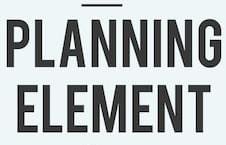
1) Prioritizing nursing diagnosis
2) Determining goal and expected outcomes
3) Select nursing
interventions
4) Developing nursing care plan
1) Prioritizing nursing diagnosis
When planning, first prioritize nursing diagnoses. That is, give first priority to nursing diagnoses that require immediate care. This priority is set according to Maslow’s hierarchy of needs. Give first priority to ineffective airway clearance. Give less priority to nursing diagnoses like knowledge deficit.
2) Determining goal and expected outcomes
After setting the priority of the nursing diagnosis, determine the goal of that diagnosis and determine the expected outcome. So that we know whether the nursing care provided is going in the right way or not. For example, to set a goal such as relieving breathing difficulties in a patient with breathing difficulties.
3) Select nursing interventions
After determining the goals and expected outcomes, select specific interventions according to the nursing diagnosis. So that the set goals can be achieved. For example, providing Fowler’s position in a patient with breathing difficulty, providing oxygen supplementation if necessary.
4) Developing nursing care plan
After setting the priority of nursing diagnosis, determining the goal and expected outcome, and selecting specific nursing interventions, develop a nursing care plan. Which provides a framework for providing nursing care.
Goal and expected outcome
- A goal is a statement of the expected outcome of a nursing intervention.
- A goal is a specific, measurable, achievable, relevant, and time-bound objective.
- It provides direction, motivation, and focus.
Write down purpose of goal of goal)
- To evaluate the effectiveness of nursing interventions
- To evaluate the client’s progress
- To evaluate whether changes are needed in nursing interventions
Write down types of goal
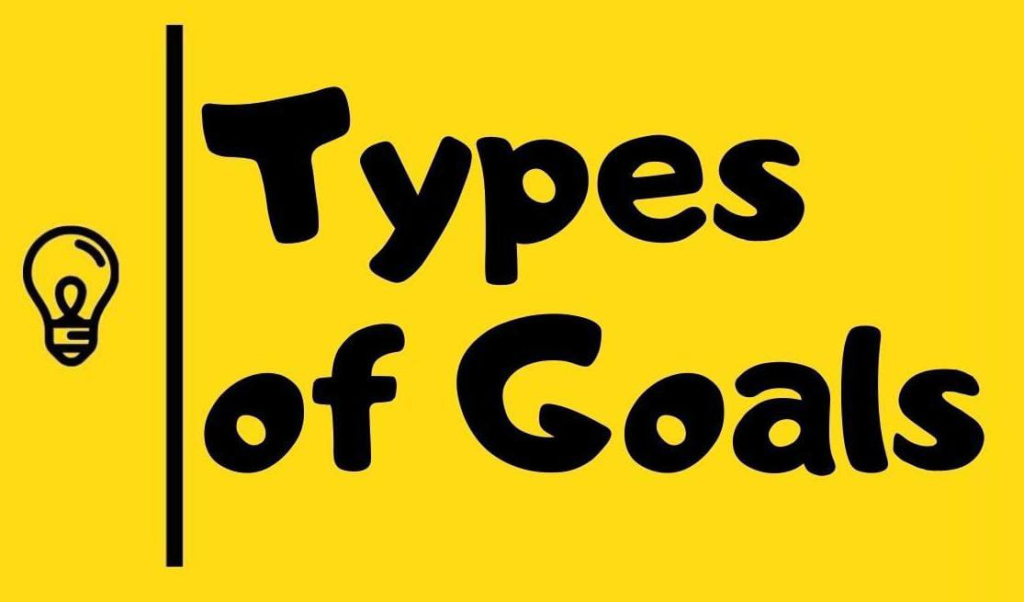
There are mainly two types of goals. :
1) Short term goal
2) Long term goal
1) Short term goal (शोर्ट टेर्म गोल)
Short term goals are determined for a short time duration. Short term goals are to be achieved within a week. Short term goals are mainly set for immediate nursing care. For example, if a patient has breathing problems, your short term goal would be to relieve the patient from breathing difficulties.
2) Long term goal
Long term goals are determined for a long duration. Long term goals are to be achieved from a week to a month. Long term goals are also applied after discharge. Such as the patient not getting any kind of infection after discharge.
Expected outcome
- Expected outcome is a type of prediction. Which predicts the result of the action taken.
- The prediction of what kind of changes are seen in the health of a patient after nursing care is provided is known as the expected outcome.
Write down principles for formulating the outcome
- Expected outcome should be realistic.
- Expected outcome should be patient-centered.
- Expected outcome should be problem-oriented.
- Expected outcome should be measurable and observable.
- Expected outcome should be clear and concise.
- The expected outcome should be time limited.
4.Implementation:

- Implementation is the fourth step of the nursing process.
- In implementation, planned activities are converted into action.
- In implementation, planned activities and procedures are performed and documented.
- A nursing intervention is a type of action that is performed by a nurse to bring a patient out of the current health status and to achieve the expected outcome.
Write down purpose of implementation

- To provide therapeutic nursing care
- To provide technical nursing care
- To help the patient achieve optimal levels of health
Write activities of implementation
- Reassess the Community People :
The condition of the community people can change at any time, so reassess the patient’s condition even after interacting with them.
- Set priority :
As the conditions of the community people change, priorities also keep changing. Therefore, based on the reassessment, set priorities and then implement nursing interventions.
- Organize resources:
Arrange the necessary equipment, articles, environment and health care personnel to provide nursing care.
- Perform nursing interventions:
To implement or perform the planned nursing interventions according to the patient’s priorities.
- Documentation:
After implementing the plan Document everything in the patient’s health record as soon as possible. Record as per the institution’s policy.
Write nursing skill required during implementation
To successfully implement a nursing care plan, the nurse must have the following skills:
- Cognitive skill:
Nurses need to have cognitive skills to identify patient needs and anticipate nursing knowledge. Cognitive skills include skills such as problem solving, decision making, and teaching.
- Interpersonal skills:
Nurses need to have the skills to develop interpersonal as well as intrapersonal relationships because they also need other health care personnel to achieve goals. Apart from this, it is also necessary to have good communication skills.
- Technical skill:
To perform procedures and use equipment and machines, a nurse must have technical skills such as administering injections, calculating doses, and handling machines such as ventilators, phototherapy machines, infusion pumps, etc.
- Psychomotor skill:
While providing nursing care, nurses need to have integration between cognitive and motor activities. For example, when giving an intramuscular injection, the nurse needs to have knowledge of anatomy and physiology as well as the motor skills to administer the injection.
5.Evaluation:

- Evaluation is the last, or fifth, step of the nursing process.
- Evaluation is a process in which the progress of the community towards the expected outcome and the effectiveness of nursing care are determined.
- Evaluation is a type of judgment that judges how effective nursing care was in achieving the set goal.
- This step determines the effectiveness and success of the entire nursing process.
- Evaluation also helps in making decisions about whether to continue, modify, or repeat the process.
- When documenting the evaluation phase, any one of the following possible conclusions is written.
- The goal was met (This sentence is written when both goals have been achieved and the desired outcome is observed. (This sentence is written when the short-term goal is achieved but the long-term goal is not achieved.)
- The goal was partially met (This sentence is written when the short-term goal is achieved but the long-term goal is not achieved)
Write purpose of evaluation (Write purpose of evaluation)

- To check effectiveness
- To monitor implementation
- To monitor the quality of nursing care
- To bring about improvements in the care plan
- To identify errors in the care plan
- Client and health care team Assess member collaboration
- Improve decision-making
Write activities during evaluation phase

- Review of Patient Goals and Outcome Criteria
- Data Collection
- Goal Measurement
- Documentation
- Revision and Modification of Nursing Care Plan
Nursing care plan :

A nursing care plan is a structure that clearly explains the problem, reason, and the process of evaluating the proper treatment, action and lastly the patient’s disease. A nursing care plan is a plan that promotes quality care and provides convenient services to patients. individual care, continuity care, communication, evaluation….
characteristics of nursing care plan ( Characteristics of Nursing Care Plan ) :

- Nursing care plan should be written by a qualified nurse.
- Nursing care plan should be the most effective because it comes into contact with the patient first and then comes into contact with the nurses, because it has to collect information related to the patient first from the patient, so it can be said to come into contact with the patient first.
- Nursing care plan should be for all care of the patient.
- Nursing care plan should contain all the information of the patient.
Component of nursing care plan (v) (Components of nursing care plan) :

Components of nursing care plan (PRONE):
1.problem (P : Problems)
2.Reason (R : Reason)
3.Objectives (O : Objectives)
4.Nursing intervention (N : Nursing Interventions)
5.Evaluation (E : Evaluation)
1.problem (P : Problems):

- A problem is an unsatisfactory state that is difficult to change into a future desire state. It is identified in the phase of Nursing diagnosis.
- It is a situation faced by the patient in which the nurse can help, which shows the performance of the nurse through her professional function.
2.Reason (R : Reason):
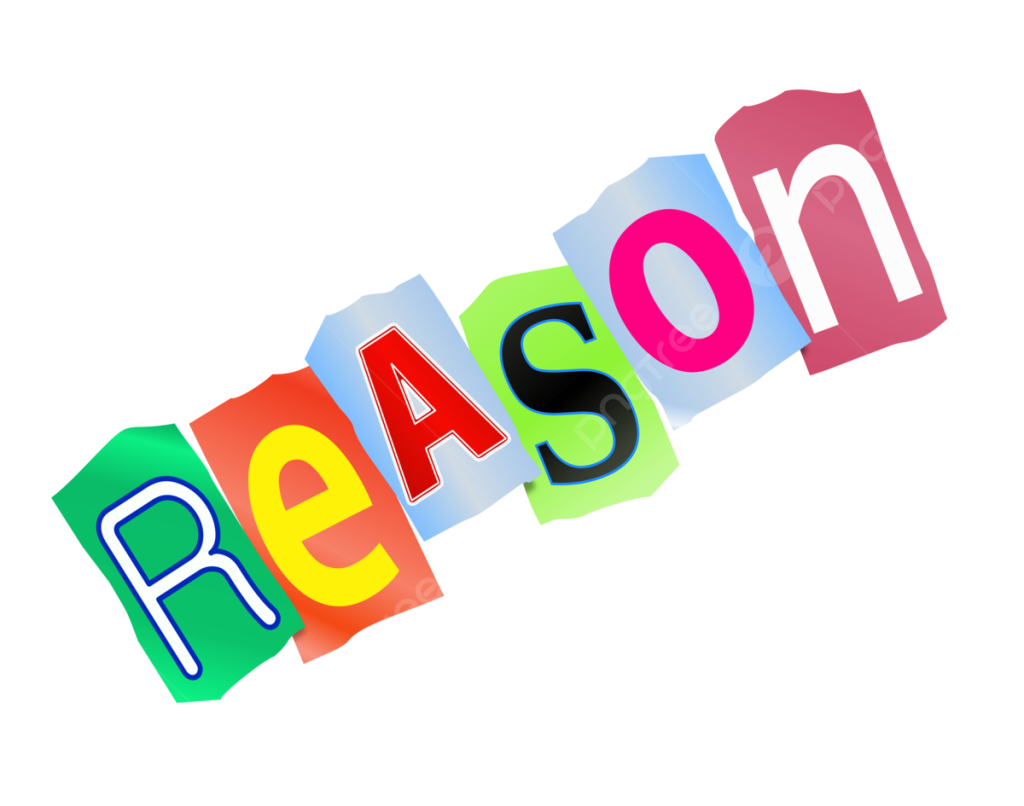
Reason can be the cause, event, sign and symptoms of the disease or condition that the patient presents during observation when he comes for a visit/interview, which helps the nurse to formulate his objectives and list nursing interventions.
3.Objectives (O : Objectives ):

This is a small statement of intended results/outcome of an action program which is the intended results/outcome of the action program which is helpful for the nurse to evaluate the patient to know the progress of the patient…
whose objectives are as follows Can….
- -Related to the problem statement
- -client centered
- -clear and concise
- -observable and measurable
- -Time limited
- -Realistic
4.Nursing intervention (N : Nursing Interventions):
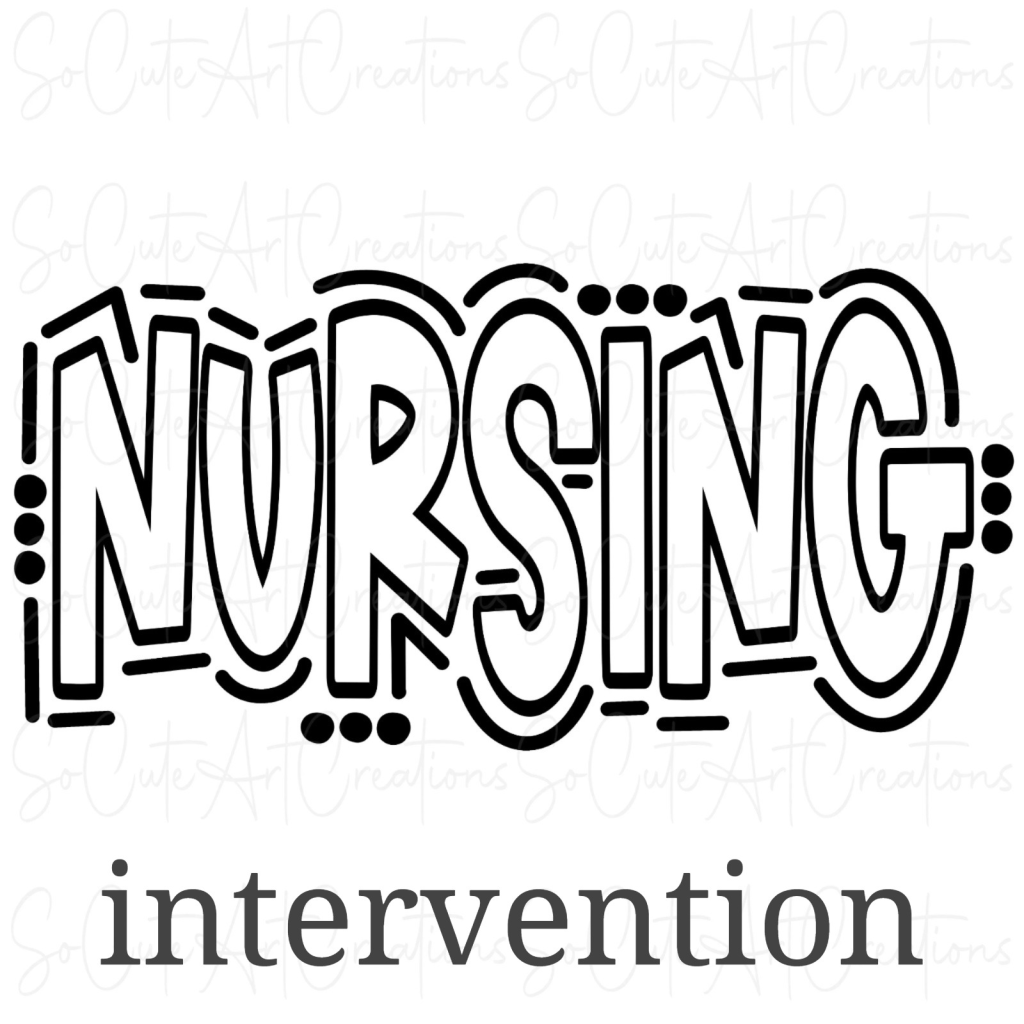
- There are specific approaches that help assist the client in accordance with his objectives.
- The etiological component is necessary for the nursing diagnostic statement.
- Gathering information during the assessment.
- The nurse should maintain interaction with the patient and his family members.
5.Evaluation (E : Evaluation):

Evaluation means to evaluate or to make an estimate or as a last phase To find the value of the effect of the care provided in the nursing process, there is a process that is used to know whether the care has been provided and whether the effect of that care has been achieved or not.
Explain functions of community nursing care:

Review prepared nursing care plan and assess identified objectives.
Provide comprehensive nursing care to individuals, families, and communities.
Prepare a working environment to provide effective community health nursing care.
Supervise care provided by the health team and other members.
Recording and reporting of the care provided.
Providing nursing care in the community without discrimination and with proper distribution. While providing care, give priority to high risk groups.
Utilizing the most available resources in the community.
Using affordable and acceptable techniques while providing care.
Working as a team leader with health team members.
In the community Coordinate with other health agencies and provide care.
Enlist the types of community nursing care services provided:

➤ According to need of community:
-Care of pregnant women’s
-Postnatal care
-Neonatal care
-Immunization
-Family planning services
-Health education
-Prevention of communicable and noncommunicable diseases.
-Recording and reporting.
-Recording and reporting.
-treatment of minor ailments .
-bring community awareness of various govt. scheme.
e.g.-BSBY, MNDY, JSSY etc.
-emergency services during accidents and trauma .
Nurse’s role:

- A nurse should be a content expert, counsellor, health educator so that she can implement community health nursing care.
- Health problems should be selected according to type.
- Participate the community for the solution of the problem.
- Know the characteristics of the process of social changes.
Explain methods of intervention (Explain method of intervention) :

Individual or family health nursing process can be implemented by a nurse but a single community health nurse is never considered as an implementation method in community health nursing process.
Small interacting groups :
-formal group
-Informal group
Lay advisor :
These act as opinion leaders. They hold high positions in the community. Village panch or sarpanch, religious persons, ward members etc.; Works as a health assistant.
Mass media (Mass Media) :
Tv, radio, video, newspaper, mobile, internet.
Health policies and public health law (Health Policies and Public Health Law):
MTP PFA, PCPNDT, RTI
Evaluation of nursing care services given ( Evaluation of Nursing Care Services Given ) :
- Evaluation is the assessment of the effects of some organized activity or program.
- The evaluation of community health nursing process mainly includes two aspects.
- -evaluation of the nurse’s performance (Evaluation of the Nurses Performance).
- -evaluation of the behavioural changes in the community (Evaluation of the of the Behavioral Changes in the Community).

